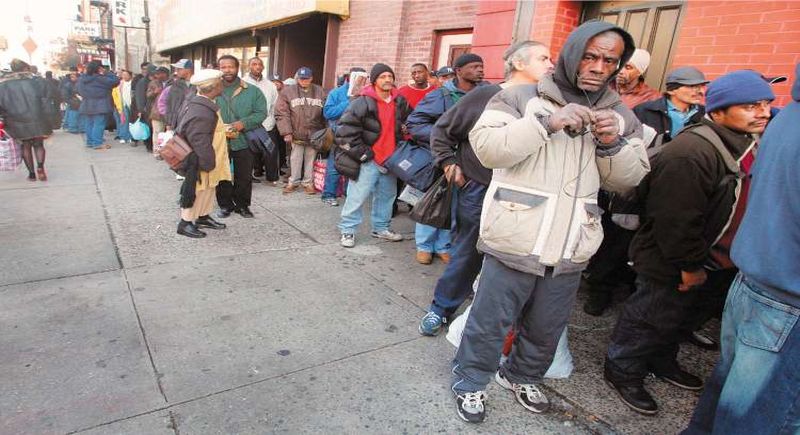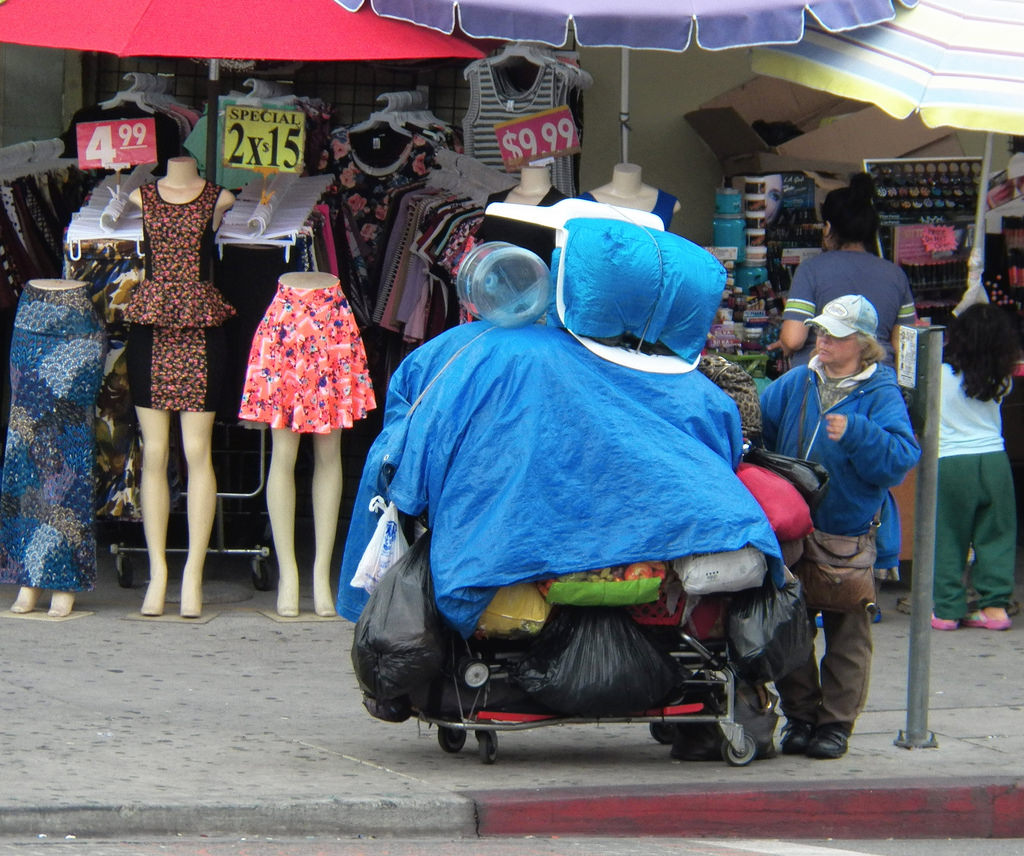(Via Zerohedge)
Earlier this week, the LA Times reminded its readers that California has the highest poverty rate in the nation.
Specifically, when using the Census Bureau’s most recent” Supplemental Poverty Measure” (SPM), California clocks in with a poverty rate of 20 percent, which places it as worst in the nation.
This continues to be something of a black eye for California politicians who imagine themselves to be the enlightened elite of North America. The fact that one in five Californians is below this poverty line doesn’t exactly lend itself to crowing about the state’s success in its various wars on poverty.
Many conservative sites have seized on the information to say “I told you so” and claim this shows that “blue-state” policies fail. One should be careful with this, of course, since there are plenty of red states in the top ten as well. Moreover, some blue states, like Massachusetts, are doing moderately well by this measure.
In the realm of political punditry, though, it matters a great deal whether one is using the regular poverty measure, or the SPM. For one, in the regular poverty measure, California ranks better than Texas, and leftists love to use the standard poverty rate to talk about how truly awful Texas and other red states are. The Supplemental Poverty Measure allows Texans to talk about how awful California is.
If we’re going to use census data to guess the prevalence of low-income households, though, the SPM is greatly superior to the old poverty rate. There’s a reason, after all, that the Census Bureau developed it, and the Bureau has long warned that poverty rates using the old measure don’t make for good comparisons across state lines.
The old poverty measure was a far more crude measure that did not take local costs into account, did not include poverty-assistance income, and basically ignored what can be immense differences in the cost of living in different locations. Many commentators often love to note how the median household income in many red states are below the national average — but then conveniently ignore how low the cost of living is in those places.
The SPM, on the other hand, takes into account the costs of “food, clothing, shelter, and utilities, and a small additional amount to allow for other needs” It includes government benefits, but also subtracts taxes. (A full explanation is here.)
The end result shouldn’t really be all that surprising: once we take into account the actual cost of living, including taxes, we find that poverty is actually quite high in California.
How to Alleviate Poverty
There are only two ways to reduce poverty and increase the standard of living:
Increase household income
Lower the cost of living
Poverty can be alleviated by simply increasing income. Or it can be done by simply reducing the cost of living. Ideally, both things happen at once, and fortunately, that’s usually how it works.
The greatest reductions in global poverty have come about due to the spread of capital and industrial production methods. This is because better and more widespread use of capital leads to two things:
1. It increases household income by increasing worker productivity. That is, each worker can produce more stuff of higher value. This means each worker can take home a higher income.
2. When we produce more stuff more quickly, that stuff becomes more affordable. Thanks to labor-saving and more efficient machinery, for example, fewer people can make more cars more quickly. In turn, more people can afford more cars because cars are more plentiful, and less expensive.
Over time, more people can buy more stuff at lower prices, thus increasing their standard of living. Even better, thanks to modern capital, those people can also produce more during the hours they work, making it possible to buy even more stuff. Both pieces work together to increase living standards.
One of the biggest problems California is facing right now, though, is that government interventions in the marketplace are making it harder and harder to produce more stuff, thus driving up prices.
The end result is a higher cost of living, and thus more poverty. Kerry Jackson at The LA Times notes:
Further contributing to the poverty problem is California’s housing crisis. More than four in 10 households spent more than 30% of their income on housing in 2015. A shortage of available units has driven prices ever higher, far above income increases. And that shortage is a direct outgrowth of misguided policies.
“Counties and local governments have imposed restrictive land-use regulations that drove up the price of land and dwellings,” explains analyst Wendell Cox. “Middle-income households have been forced to accept lower standards of living while the less fortunate have been driven into poverty by the high cost of housing.” The California Environmental Quality Act, passed in 1971, is one example; it can add $1 million to the cost of completing a housing development, says Todd Williams, an Oakland attorney who chairs the Wendel Rosen Black & Dean land-use group. CEQA costs have been known to shut down entire homebuilding projects. CEQA reform would help increase housing supply, but there’s no real movement to change the law.
Extensive environmental regulations aimed at reducing carbon dioxide emissions make energy more expensive, also hurting the poor. By some estimates, California energy costs are as much as 50% higher than the national average. Jonathan A. Lesser of Continental Economics, author of a 2015 Manhattan Institute study, “Less Carbon, Higher Prices,” found that “in 2012, nearly 1 million California households faced … energy expenditures exceeding 10% of household income. In certain California counties, the rate of energy poverty was as high as 15% of all households.” A Pacific Research Institute study by Wayne Winegarden found that the rate could exceed 17% of median income in some areas.
It is increasingly becoming common knowledge that California is notoriously bad in terms of the cost of housing.
Every time a new “top ten” list of least-affordable housing markets is published, California cities often dominate the top of the list. In this list, for example, San Francisco, Los Angeles, San Jose, and San Diego are all in the top ten.
Housing is perhaps the poster child for the impossibility of getting ahead in California. Much of this is due to locally-based NIMBYism in which local governments actively intervene to reduce new housing construction for the sake of “preserving the character” of the neighborhoods. This is just another way of sawing: “rich people like things the way they are, so you poor people can just get lost. We’re not building any more housing.”
These same rich people then later pat themselves on the back for voting Democratic and “doing something” about poverty.
But it’s not all just local regulations. As Jackson notes, environmental regulations are especially burdensome on businesses, thus driving up the cost of everything. This is especially true of housing which requires land, water resources, and visibly impacts the local environment.
These regulations, mind you, are all imposed on top of already existing federal regulations, and in addition to the environmental regulations that already function with a lower burden to business in other states. Coloradans, for example, aren’t exactly living in rivers of toxic sludge, in spite of having fewer environmental regulations — and cheaper housing.
Nor is housing the only industry impacted by these regulations. Mountains of anti-business regulations in the state also make it harder to start new businesses, hire people, and cover the basic costs of expanding worker productivity. Fewer workers get hired. Less capital is deployed to workers. The end result is that worker productivity growth can’t keep up with increases in the cost of living. Poverty results.
Recognizing this vise in which the poor are caught in California, the response is always the same: more rent control, more regulations, more more costly hoops for employers to jump through.
“We’re taming capitalism!” the politicians tell themselves. Unfortunately, they’ve driven a fifth of the population into poverty in the process.
But don’t expect things to improve for the poor in California any time soon. California is perhaps the single biggest example in the US of how stylish locales become playgrounds for the rich, and a treadmill to nowhere for everyone else.
In recent years, news outlets have carried a number of articles on how workers in silicon valley are living in their cars. Sometimes, the homeless even have jobs at the big tech firms like Facebook. Nearly all of these homeless people have jobs of some sort, though. Thanks to the ruling classes of California, though, a basic apartment is $3,000 per month, while food and gasoline aren’t exactly cheap.
The well-to-do tell themselves that the high cost of living is simply “the cost of doing business” for living in such a wonderful place with so many enlightened, intelligent, and beautiful people. People can go to the beach whenever they want, and life is wonderful.
Of course, anyone who has actually lived in California as a non-wealthy person knows that one most certainly can’t go to the beach “whenever you want.” If one is working two jobs to pay the rent, a day at the beach — after sitting in traffic and paying for parking — isn’t exactly a regular event. Moreover, the communities with non-sky-high rents are generally found well inland, and aren’t exactly next to Malibu.
This may help explain why, as the Sacramento Bee reported last year, California is exporting its poor to Texas. The beaches aren’t as nice in Texas, but many of these migrants are trading in the beaches — which they never see anyway — for an affordable apartment.

 Iowa2 weeks ago
Iowa2 weeks ago
 Iowa4 days ago
Iowa4 days ago
 Iowa2 weeks ago
Iowa2 weeks ago
 Iowa12 hours ago
Iowa12 hours ago








